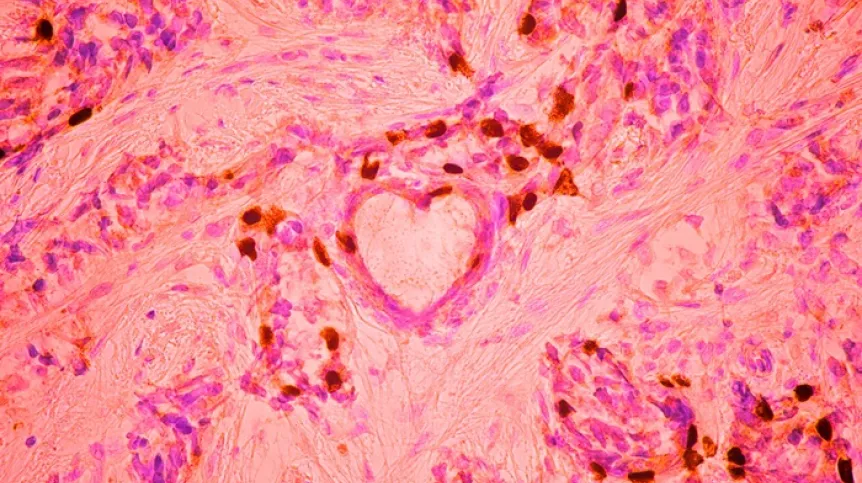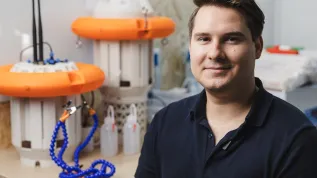
Małgorzata Lisowska captured her own cancer cells that form the shape of a heart in a microscopic photo. The photograph won 3rd place in the Nikon Small World competition. The artist, suffering from breast cancer, will sell the award-winning work and use the proceeds for further oncological treatment.
The 3rd place winner is a cancer patient. This year she was diagnosed with breast cancer. 'These are my cancer cells (...) How can something so dangerous be so beautiful at the same time?,’ the artist asks on her Instagram @lisowskamargaret, where you can see her other works. She has been doing photomicrography for over a year.
'When I heard the diagnosis, I immediately wanted to see what my cancer looked like. The authentic visual layer of cancer is the missing element in the oncological narrative. I want to change that,’ says Lisowska. In her opinion, the fact that the photographed cancer cells were arranged in a heart shape emphasizes the uniqueness of the photograph. 'October has been recognized around the world as Breast Cancer Awareness Month for many years now. This makes the photo's message even more effective,’ she says.
Lisowska's dream is to change the narrative in oncology and work for patients. As she wrote on Instagram, what she saw under the microscope had and still has therapeutic value for her. 'When I saw the heart, I had a hard time believing it was real.’ Since March, she has undergone 16 chemotherapy treatments as a patient. In early October she had a breast mastectomy with reconstruction. 'The last few months have been a difficult journey. As usual in difficult moments of my life, art has been the greatest support,’ she says.
She shares her experience and therapeutic work using microscopic images with other cancer patients. She emphasises that for them it is also an important encounter with a part of themselves, with their emotions, with their narrative. 'If you know someone who uses microscopic images of cancer cells in therapeutic work with cancer patients, help us connect. I would like to exchange experiences,’ she says. And she adds: 'When was the last time you had a medical examination?'
Lisowska’s artistic goal - as she emphasises on the Art of Poland website - is to draw attention to the new dimension of the world that we have at our fingertips: invisible to the human eye, and yet creating our everyday life, and even ourselves. She photographs chemical substances, plant and human tissues. She draws inspiration from NASA photos, wanting to convey a different, more personal perspective of space.
She is also an ambassador of the Dutch organization Value Based Healthcare, which specialises in measuring the effects of treatment. She was a mentor for medical startups at the European Institute of Innovation and Technology. She completed postgraduate studies in Psycho-oncology at SWPS University. She completed her MBA at JiaoTong University in Shanghai, China. She is currently working on an exhibition of cancer cells with the Institute of Oncology in Gliwice, as the exhibition curator.
Lisowska sells the award-winning work under the title ' buy me health', and the proceeds will be used for further treatment. To make a purchase, contact the artist by e-mail at lisowskamalgorzata@gmail.com or by phone: 0048 607 573 943. Two photo formats are available: 29 x 29 cm - framed in a 40 x 40 cm oak frame and museum glass, and 15 x 15 cm without a frame.
Eighty-three photos out of thousands of entries from scientists and artists from around the world were awarded in the international photomicrography competition Nikon Small World.
Lisowska took 3rd place. Previously, Polish authors stood on the podium of this competition 31 years ago. All works awarded in Nikon Small World 2023 can be seen in the competition gallery.
PAP - Science in Poland
kol/ zan/ kap/
tr. RL













